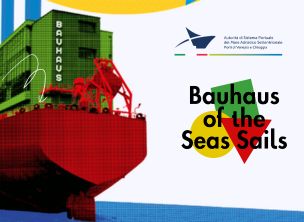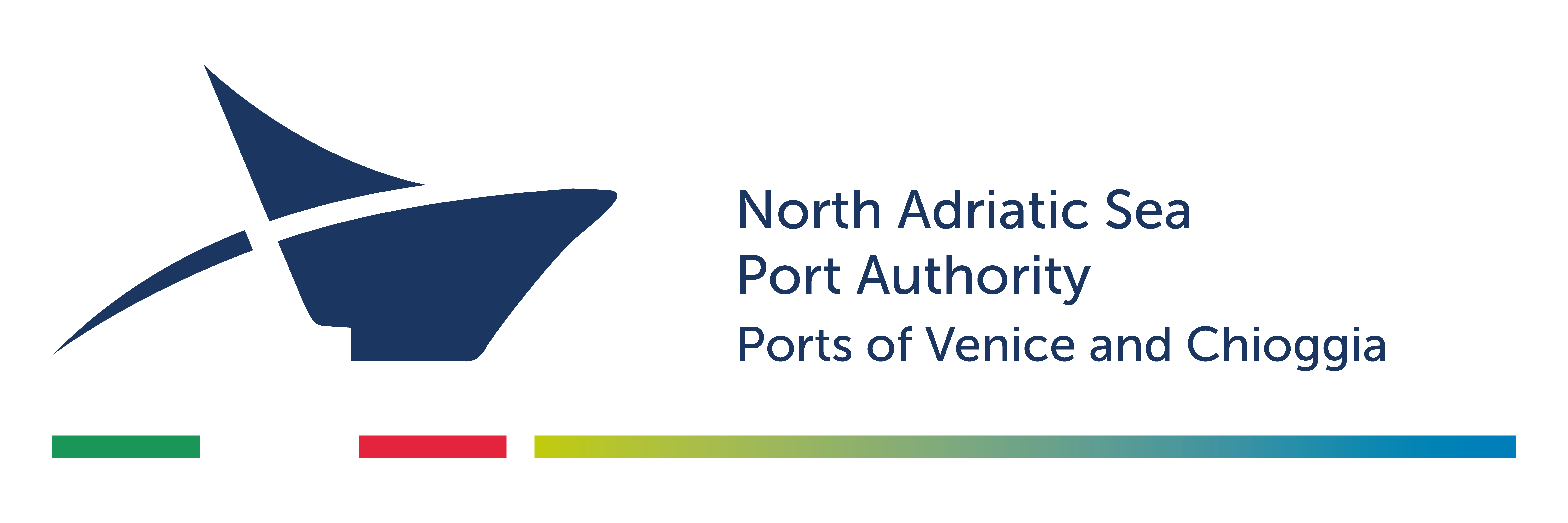
European Territorial Cooperation
New European Bauhaus
 Duration: 01/01/2023 – 31/12/2025 (36 mesi)
Duration: 01/01/2023 – 31/12/2025 (36 mesi)
Budget totale: € 4.999.975,00 (finanziato al 100%)
Grant agreement ID: 101079995 cordis.europa.eu/project/id/101079995
Involved Countries (Partners)
Coordinated by
IST-ID ASSOCIACAO DO INSTITUTO SUPERIOR TECNICO PARA A INVESTIGACAO E O DESENVOLVIMENTO
Participants
- Magellan Circle – European Affairs Consultancy, LDA
- Fundacion TBA21
- Universita Ca’ Foscari Venezia
- Malmo Universitet
- Comune di Genova
- Stichting Het Nieuwe Instituut
- Technische Universiteit Delft
- Marint Kunskapscenter i Malmo ek for
- Autorita di Sistema Portuale Del Mare Adriatico Settentrionale – Porti di Venezia e Chioggia
- Comune di Venezia
- Universita IUAV di Venezia
- Fondazione Istituto Italioano do Tecnologia
- Fundacao Calouste Gulbenkian
- Municipio de Oeiras
- Camara Municipal de Lisboa
- Linieland Van Waas En Hulst Europese Groepering Voor Territoriale Samenwerking Met Beperkte Aansprakelijkheid
- The New Institute Foundation GGMBH
Inspired by the visionary principles of the Bauhaus school, the Bauhaus of the Seas Sails project combines art, culture, and technology with a deep commitment to environmental sustainability. It aims to revolutionize design, architecture, and social development, redefining beauty as a quality that embraces the well-being of ecosystems. With 18 partners across Europe’s coastal regions, the project responds to the New European Bauhaus challenge by envisioning a future where our relationship with the seas and oceans is transformed.
Objectives
The Bauhaus of the Seas Sails project sets ambitious objectives to promote sustainable design and architecture while fostering grassroots co-design movements. By shifting the focus to ecosystem well-being, the project aims to reimagine our interactions with food, rest, learning, socializing, and the environment. Through innovation and collaboration, it seeks to reduce pollution, regenerate aquatic ecosystems, and create blueprints for sustainable development. The project’s goal is to inspire coastal regions worldwide, catalyzing a lasting impact on our seas and oceans.
Drops
The Bauhaus of the Seas Sails consortium partners adopt eight drop typologies, each addressing distinct environmental and societal challenges:
- Multispecies Assemblies: Foster ecological regeneration and governance through cooperation between human and non-human life. Promote participatory governance and address climate impacts.
- Regenerative Menus: Implement adaptable food options that have a regenerative impact on the local aquatic ecosystem. Explore shifting food landscapes and promote balanced diets.
- Blue Makerspace: Focus on design research and knowledge-sharing around water-based materials. Foster sustainable applications in design, textiles, and architecture.
- Ocean Literacy: Educate new generations about ocean sustainability through actionable insights and design actions. Translate scientific findings into industry partnerships.
- Inclusive Digital Storytelling: Address cultural exclusion through geolocalized digital storytelling platforms. Amplify voices, bridge gaps, and promote intercultural dialogue.
- Wellbeing Reefs: Regenerate natural reefs and create better habitats for human and wildlife. Develop strategies, tools, and techniques for sustainable reef building.
- Blue Seniors: Address the needs of seniors in coastal areas, promoting spatial and cultural justice. Create inclusive platforms and tools for enhanced well-being.
- Future Tidal Architectures: Envision resilient scenarios for coastal areas and wetlands. Consider sea-level rise and changing rainwater patterns in urban design.
Pilot Actions Venice
The pilot actions involving Venice and the North Adriatic Sea Port Authority – Ports of Venice and Chioggia are an integral part of the interconnected pattern of urban renewal initiatives. These actions aim to build an active, multifaceted, and inclusive ecosystem, involving contributions from local citizens, scholars, students, creatives, and entrepreneurs. The focus is on reconnecting with the coastal habitat and showcasing solutions that address the challenges specific to the region while being meaningful and shared with the world.
Through co-creation workshops, involving local inhabitants, faculty, students, entrepreneurs, and relevant stakeholders, the pilot actions gather input and ideas to develop prototypes and plans. The outcomes are refined based on evaluation and feedback from the target groups. Public demonstrations of the prototypes and plans serve to involve and engage the community, leading to the release of activities for local use and the potential replication of the pattern in other coastal cities.
A significant aspect of the pilot actions is the reconnection of the waterfront to the city. Small ships and trucks populate the docks, offering eco-sustainable aquaculture and farming products from the nearby islands. This not only provides convenient access to everyday needs for citizens but also raises awareness among tourists about eco-sustainable fishing practices. Eco-cruises on small ships further enhance awareness of sustainable initiatives in the Lagoon.
The pilot actions also emphasize inclusive digital storytelling platforms, promoting intercultural dialogue and bridging gaps in society. Geolocalized digital platforms amplify voices that are often excluded and encourage participation from diverse communities. In addition, the pilot actions strive to address the needs of seniors in coastal areas, creating inclusive platforms and tools to enhance their well-being and promote spatial and cultural justice.
A feasibility study is conducted to create a digital twin of the area, mapping the buildings, open areas, and activities. This virtual counterpart aids in analyzing, designing, and evaluating the pilot activities. It extends the reach of the pilots’ activities beyond physical boundaries through a multiuser virtual world, providing an additional channel for demonstration and engagement.
The pilot actions involving Venice and the North Adriatic Sea Port Authority – Ports of Venice and Chioggia exemplify collaborative efforts and innovative approaches to creating a sustainable and thriving ecosystem in the region. By addressing specific challenges and making an impact locally and globally, these actions contribute to a brighter and more sustainable future for coastal areas.
Expected Results and Outcomes
The Bauhaus of the Seas Sails project envisions a multitude of impactful results and outcomes that will emerge from its innovative and collaborative efforts. One of the key expected results is the creation of sustainable coastal communities that integrate nature-inspired design principles and regenerative practices. Through the development of interdisciplinary blueprints and prototypes, the project aims to catalyze a transformation in coastal architecture and urban planning, leading to the emergence of resilient, resource-efficient, and aesthetically pleasing habitats.
By leveraging digital technologies and decentralized systems, the project anticipates the establishment of role-model “lighthouse demonstrators” in coastal ecosystems. These demonstrators will serve as living examples of sustainable practices, showcasing how the principles of the New European Bauhaus can be applied to create harmonious and thriving coastal environments. These prototypes will not only inspire and inform other regions but also attract tourists, researchers, and policymakers, generating knowledge exchange and promoting the adoption of sustainable practices on a broader scale.
Furthermore, the Bauhaus of the Seas Sails project expects to foster a sense of ownership and engagement among coastal communities. By involving diverse stakeholders, including local residents, businesses, cultural organizations, and environmental activists, the project aims to empower communities to actively participate in the co-design process. This active involvement will not only lead to more inclusive and contextually relevant solutions but also strengthen the social fabric and sense of identity within these communities.
In terms of environmental outcomes, the project anticipates a significant reduction in pollution and the regeneration of aquatic ecosystems. By adopting circular economy principles, promoting responsible waste management, and implementing innovative approaches to water and energy consumption, the project seeks to mitigate the negative impacts of human activities on coastal areas. Through its emphasis on sustainability and regenerative practices, the Bauhaus of the Seas Sails project aspires to become a catalyst for positive change, inspiring similar initiatives and fostering a collective commitment to safeguarding our seas and oceans.
Overall, the expected results and outcomes of the Bauhaus of the Seas Sails project encompass the creation of sustainable coastal communities, the establishment of role-model prototypes, the active engagement of diverse stakeholders, and the regeneration of aquatic ecosystems. By achieving these outcomes, the project strives to create a lasting impact that transcends its geographical boundaries, serving as a blueprint for coastal regions worldwide and contributing to a more sustainable and beautiful future for our planet.
Learn more about the role of the Port of Venice in the BOSS project and the Future Tidal Architecture drop in this interview with Architect Alessandra Libardo, head of AdSPMAS’ urban planning unit and team leader of the project.
Project link: bauhaus-seas.eu

